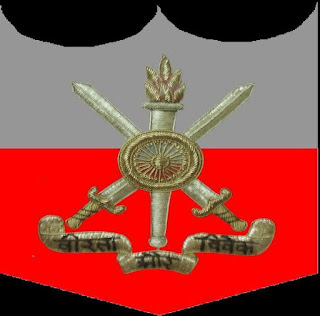Indian Military Academy (IMA) भारतीय सैन्य अकादमी
My Dear Indians,
Today is the establishment day of The Indian Military Academy (IMA) भारतीय सैन्य अकादमी
Field Marshal Philip Chetwode had said the following words which are inscribed on the wall of IMA-
These words is the best lesson that I have ever learnt on-
Good Character
Being a leader ,and
Taking responsibility in public life
The Gentlemen Cadets (trainees at IMA) who pass out as Officers of The Indian Army live AND die on these principles.
My Dear Indians,
Each one us should learn and practice these principles of a soldier.
EACH one of us is a Soldier
FORCES has two motos…
The second one is –
मैं नहीं ..हम
And the first moto is –
The first batch of GCs passed out of IMA in the year 1934.
Field Marshal Sam Manekshaw was a part of this batch.
Field Marshal Sam Manekshaw (then General) was the Chief of Indian Army in 1971.
During the war with Pakistan in 1971, Pakistan was ruled by an army dictator named General Yahya Khan. He was also a part of the first batch of IMA. He was a batch-mate of Field Marshal Sam Manekshaw.
Look at this contrast.
Two men pass out from the same institution as batchmates….. one goes on to be a Dictator and is ultimately responsible for the defeat and division of his country Pakistan… and the other serves the Democracy of India and is ultimately honoured for the glorious victory that he earns for his country.
After the war even Pakistani soldiers, who were taken prisoners of war by India, praised the professionalism of the Indian Army and it’s Chief.
CHATACTER is what differentiates Indian Army and India from everyone else
We are fortunate to be born in INDIA.
(Emblem of The IMA-- Steel Grey denotes 'Courage' and Blood Red denotes 'Sacrifice')
Question-
What is the limit of an Indian Soldier ?
Answer-
Limit on an Indian Soldier is the limit of his Officer
Tell me what does this mean ?
In the Indian Army, Officers lead and men follow. It is the nature of an Indian Officer to lead from the front or to lead by example. It is the Officer who shows the way.
Since the Officer leads, it is he who will define the 'limit of commitment' to duty and the 'limit of passion' to achieve the target.
This is what it means when we say "Limit on an Indian Soldier is the limit of his Officer". If the Officer does it, then his men/ soldiers will definitely do it.
This principle works in the civilian world as well.
Be an Officer by nature, my dear Indians, and lead the way.
Set an example with your actions.
Jai Hind !
Gaurav Negi




Comments
Post a Comment